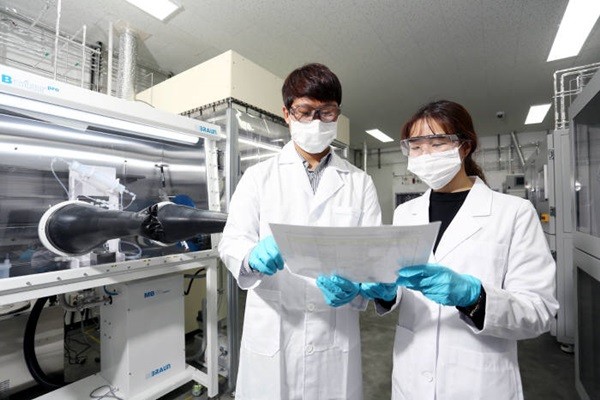JSR, which is a Japanese photoresist (PR) manufacturer and is the top photoresist manufacturer in the world, is looking to manufacturer photoresists in South Korea. As South Korean semiconductor and display companies have diversified and stabilized their supply network since Japanese Government’s export regulations, Japanese companies are looking for a way out by manufacturing their products in South Korea. South Korean semiconductor and display material companies are also starting to finish their preparations to replace Japanese products with their products. Although interests were on a possible change to Japanese Government’s export regulations as South Korean Government suspended its plan to pull out of GSOMIA (General Security of Military Information Agreement) between South Korea and Japan, South Korean companies will continue to diversify and stabilize their supply network.
According to industries, JSR is looking into manufacturing ArF (Argon Fluoride) photoresists that are needed for semiconductor production in South Korea.
JSR is looking to constructing a new semiconductor material production line in Ochang where it already has a display material plant in order to supply its products to Samsung Electronics. It is confirmed that JSR sent such information to Samsung Electronics.
ArF is a light source that is use the most to produce memories that are major exports for South Korea. Photoresist interacts with a light source and draws semiconductor circuits on top of a silicon wafer. ArF photoresist is not regulated by Japanese Government. However, EUV (Extreme Ultraviolet) photoresist is currently regulated by Japanese Government.
JSR is the top photoresist manufacturer in the world as it owns 24% of the market shares. South Korea’s semiconductor industry and Samsung Electronics especially is the reason why JSR is looking into manufacturing photoresists in South Korea. When Samsung Electronics, which is the world’s biggest memory manufacturer and a key customer for JSR, has started looking for alternatives regarding supply and demand of key semiconductor materials while keeping in mind that the conflict between South Korea and Japan may spread to other areas, JSR has come up with a plan to manufacture its photoresists in South Korea. Because no one knows how long and to what areas the conflict between the two countries will spread to, Samsung Electronics has come up with plans for the future while JSR has come up with its own plan to secure its markets.
“Although JSR’s plan to invest into a photoresist production line in South Korea is shared with Samsung Electronics, there are still a lot left to do before a final decision is made.” said a key representative for the industry who is familiar with this issue.

On the other hand, South Korean semiconductor and display companies are continuing to localize key materials that will replace Japanese products.
SK Materials has recently constructed a gaseous hydrogen fluoride plant. Gaseous hydrogen fluoride, which is also called etching gas, is used to shave off unnecessary circuits during a semiconductor manufacturing process.
Showa Denko had been the major gaseous hydrogen fluoride supplier for Samsung Electronics and SK Hynix. However, there have been concerns about supply and demand of gaseous hydrogen fluoride due to Japanese Government’s export regulations. SK Materials, which specializes in special gases, has started working on localizing gaseous hydrogen fluoride.
Although SK Materials announced that it would supply a sample by end of this year, there is a possibility that it will be able to supply a sample earlier than its initial plan. It is looking to go through evaluations from its customers and supply its gaseous hydrogen fluoride for actual semiconductor mass-production process sometime during the first half of next year. SK Materials also constructed a comprehensive analysis center at its headquarters in Yeongju that will play a key role in semiconductor material development.
Soulbrain, which has been preparing to localize hydrogen fluoride in a liquid form, recently finished extending its plant. After it finished extension of its plant at the end of October, it had gone through every administrative procedure needed to operate its plant.
Hydrogen fluoride in a liquid form is used to remove oxide layers on a wafer during a semiconductor manufacturing process. South Korean semiconductor and display companies have been using mostly Japanese products from Stellachemifa and Morita Chemical Industries.
Extension of Soulbrain’s plant has drawn interests as it is expected to handle amount of supplies necessary for Samsung Electronics and SK Hynix. Although the completion date was expected to be in December initially, Soulbrain was able to finish preparations due to prompt investments and administrative support that have resulted from Japanese Government’s export regulations. Although hydrogen fluoride that will be manufactured from Soulbrain’s plant still requires evaluations, it will be a matter of time before Soulbrain’s hydrogen fluoride is actually used for semiconductor mass-production process.
Staff Reporter Yun, Geonil | benyun@etnews.com & Staff Reporter Kang, Hyeryung | kang@etnews.com